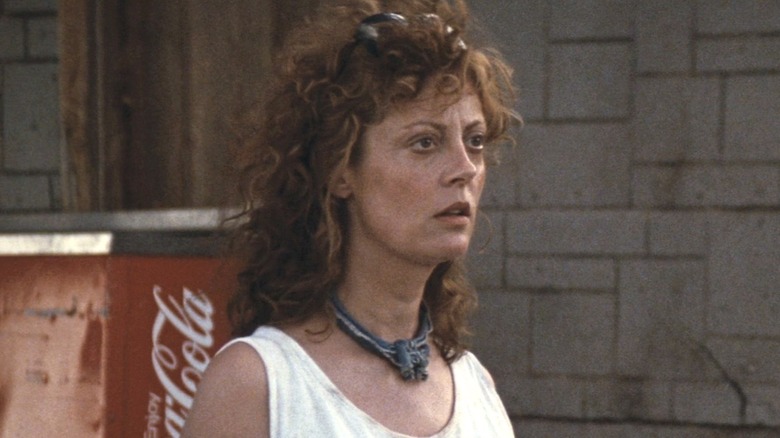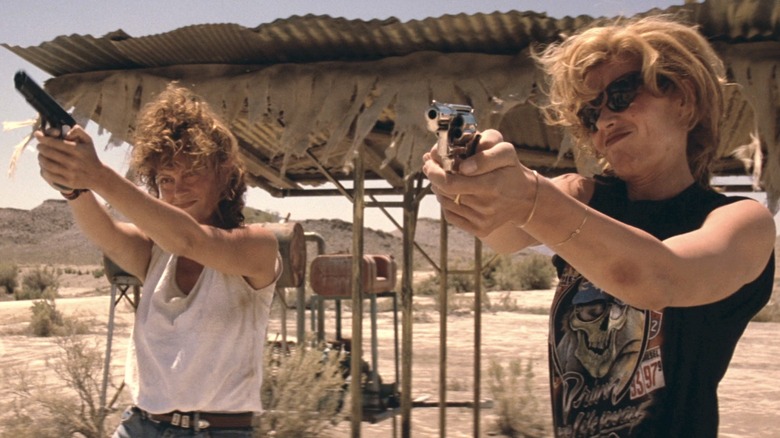How Susan Sarandon Changed The Direction Of Thelma & Louise
As people very well know by now, "Thelma & Louise," the 1991 film directed by Ridley Scott, chronicles the few days that best friends Thelma Dickinson (Geena Davis) and Louise Sawyer (Susan Sarandon) spend on the run after Louise shoots and kills a man named Harlan (Timothy Carhart) who was attempting to rape Thelma. Distraught over what happened and scared to go to jail, they go to great lengths to escape. In the end, the police catch up with them and they ultimately decide to "keep going" and drive their car off a cliff.
It's one of the most famous films of all time, with one of the most memorable endings. But, as it turns out, the film as a whole was almost quite different — until Sarandon stepped in and requested some changes. In a March 2016 conversation with George Saunders for Interview Magazine, Sarandon revealed that, in the original script, Thelma and Louise jump up and down in celebration after Louise shoots Harlan. Sarandon continued, "When I got the script for 'Thelma & Louise' [and] met with the director, Ridley Scott, I said, 'I don't want to do a revenge film ... What would be interesting to me is that there is a price."
Sarandon suggested they shorten the time spent on the run to better fit their motivations
In the Interview piece, Susan Sarandon further explained why she didn't think that killing Harlan should be something that the two best friends are happy about. Namely, it needed to reflect that Louise's past experience of being raped took over her actions at the moment. "She understands when she kills that guy, and she kills him not as an execution, in my interpretation, but just trying to shut him up, and her rape from the past takes over," Sarandon said. "Then she's on the rest of this journey knowing that she's going to have to pay." Further, Sarandon wasn't interested in Louise being redeemed in the end.
A major detail that Sarandon helped alter was how long Thelma and Louise are on the run. She implied that the original script took place over about a month, but that a month seemed too long for the ending to make sense. The actress said, "[I said, 'Let's] have her not get much sleep, where going off the cliff seems like a good idea. It can't be as long as a month, because then you have time to think about it.'"
Finally, Sarandon noted that she switched up some of the lines to reflect the motivation that she thought Louise had. "I think what's really motivating her, what's pushing her, is not revenge, but it's trying to understand why men would think women would want this kind of behavior ... That was the through-line that I took instead of revenge. Because I think that's what made it different, instead of a shoot-'em-up cowboy film. It just didn't interest me the other way," she explained.

